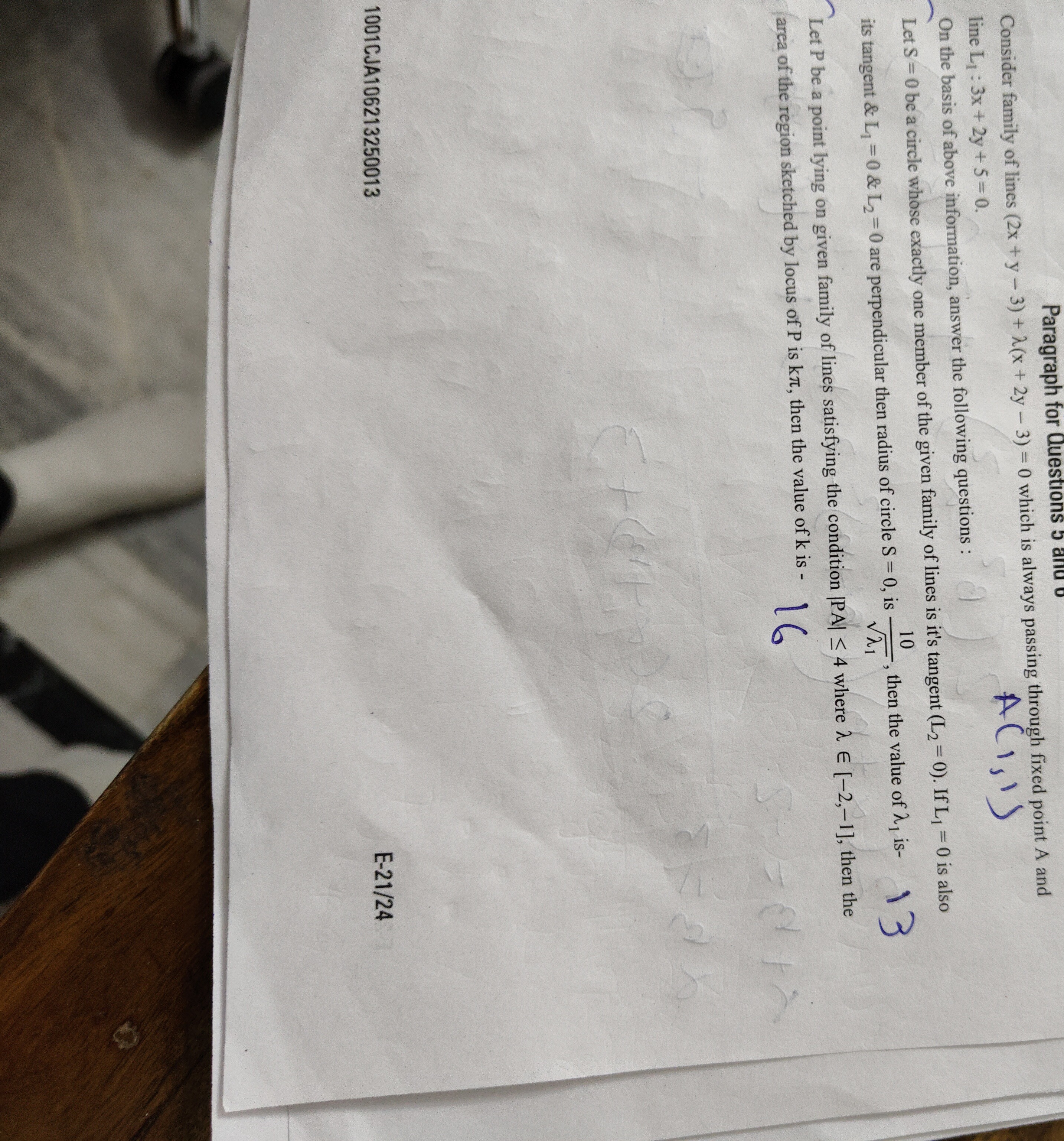Question
Question: Let S = 0 be a circle whose exactly one member of the given family of lines is it's tangent (L₂ = 0)...
Let S = 0 be a circle whose exactly one member of the given family of lines is it's tangent (L₂ = 0). If L₁ = 0 is also its tangent & L₁ = 0 & L₂ = 0 are perpendicular then radius of circle S = 0, is λ110, then the value of λ₁ is-

13
10
7
5
13
Solution
The family of lines is given by (2x+y−3)+λ(x+2y−3)=0. This family of lines always passes through a fixed point A. To find A, we set the coefficients of λ to zero: 2x+y−3=0 x+2y−3=0 Solving these equations, we find x=1 and y=1. Thus, the fixed point is A(1, 1).
We are given L1:3x+2y+5=0. L2 is a member of the family of lines and is tangent to circle S. The equation of a line in the family is (2+λ)x+(1+2λ)y−3(1+λ)=0. We are also given that L1 and L2 are perpendicular. The slope of L1 is m1=−23. The slope of L2 is m2=−1+2λ2+λ. For perpendicular lines, m1m2=−1: (−23)×(−1+2λ2+λ)=−1 2(1+2λ)3(2+λ)=−1 6+3λ=−2(1+2λ) 6+3λ=−2−4λ 7λ=−8⟹λ=−78.
The distance from the fixed point A(1,1) to the line L1:3x+2y+5=0 is: d(A,L1)=32+22∣3(1)+2(1)+5∣=9+4∣3+2+5∣=1310.
The radius of circle S is given as R=λ110. Since the circle S is tangent to L1 and L2, and L1 is a line, the radius of the circle is related to the distance from its center to L1. The problem statement strongly suggests that the radius of the circle is equal to the distance from the fixed point A to L1. Therefore, R=1310. Comparing this with the given formula for the radius, R=λ110, we have: λ110=1310 λ1=13 λ1=13.
